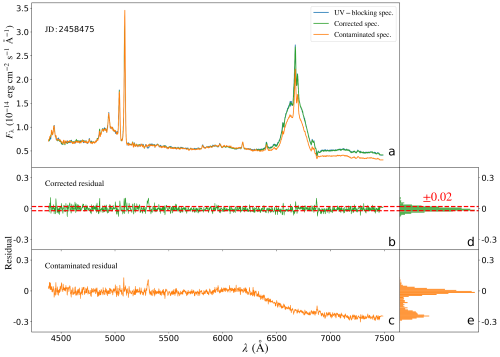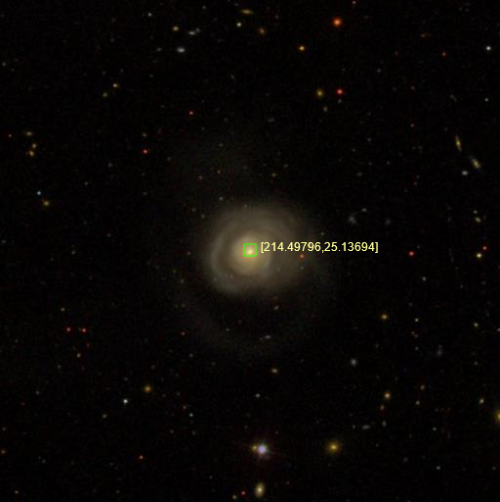A study published in the journal Research in Astronomy and Astrophysics by graduate student XI Wenzhe from the Yunnan Observatories, Chinese Academy of Sciences (CAS), presents an innovative method to rectify second-order spectra (SOS) contamination in the time-domain spectroscopic data using the simultaneously observed comparison stars. This technique, applied to the spectroscopic monitoring data of active galactic nuclei (AGNs) in Lijiang could potentially increase the existing Hα reverberation mapping results, enhancing our understanding of the Hα radiation region within the broad line region (BLR).
AGNs are characterized by their broad emission lines, widely believed to originate from the BLR, located thousands of gravitational radii from the central supermassive black hole. The high-velocity clouds within the BLR, driven by the intense gravitational force, produce broad emission lines exceeding one thousand kilometers per second.
The reverberation mapping method, applied successfully to around a hundred AGNs so far, ingeniously converts spatial resolution into temporal resolution through months-long spectral monitoring. This conversion allows for the measurement of the central black hole’s mass and sheds light on the physical processes within AGNs.
However, a substantial amount of the spectroscopic monitoring data near the Hα emission line has been tainted by SOS. For example, Grism14 of the 2.4-meter telescope in Lijiang has strong blue-end SOS contamination around 6300 Å. To tackle this, researchers obtained a comparison star template spectrum without SOS contamination using a UV-blocking filter. This spectrum was then used for flux calibration to remove the standard star’s SOS influence. The SOS influence of the scientific object and the comparison star was further corrected using the comparison star’s Hα absorption line.
Under the spectral observation conditions of NGC 5548 used in this study, the influence of SOS contamination can reach about 30%. While SOS contamination significantly affects absolute flux calibration and the emission line profile, it has a minor impact on the light curve and time delay. The researchers’ correction method effectively corrects SOS contamination, with a deviation of about 2% between the corrected spectrum and the intrinsic spectrum obtained through the UV-blocking filter.
The proposed SOS correction method can be applied to time-domain spectroscopic monitoring data with comparison stars observed simultaneously in the field of view. This innovative approach opens new avenues for exploring the mysteries of AGNs.

Figure 1, spectra of NGC 5548. (a): Spectra of NGC 5548 from the UV-blocking observation (blue), contaminated observation (orange) and the correction method (green). (b): Residual of contaminated spectra relative to UV-blocking spectra. (c): Residual of corrected spectra relative to UV-blocking spectra. (d): Histogram of the residual of contaminated spectra. (e): Histogram of the residual of corrected spectra. The red dashed lines are 2% and −2%. Note the blue line is the result from the UV-blocking data, which almost perfectly coincides with the green line. Image by XI.

Figure 2. NGC 5548. Image by XI.
Contact:
XI Wenzhe
Yunnan Observatories,CAS
E-mail:xiwenzhe@ynao.ac.cn